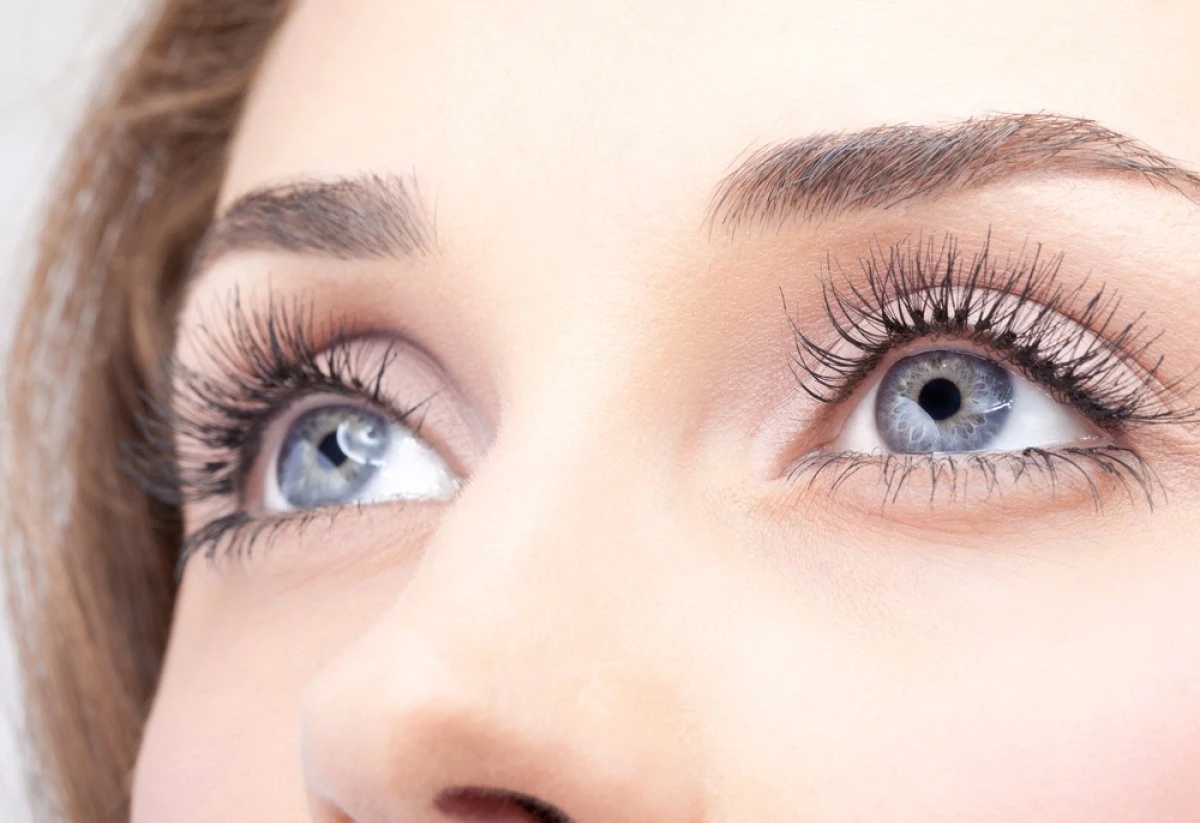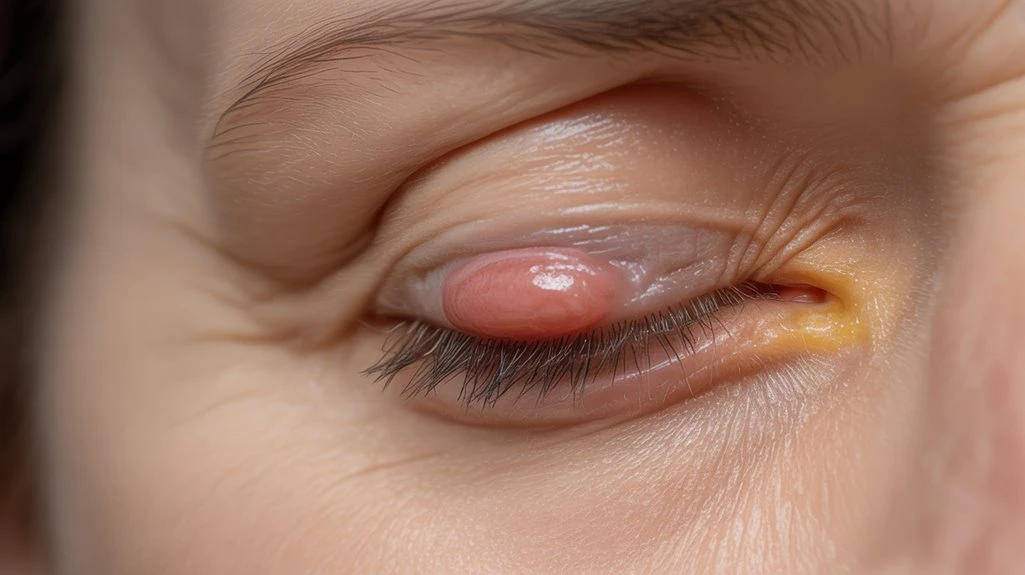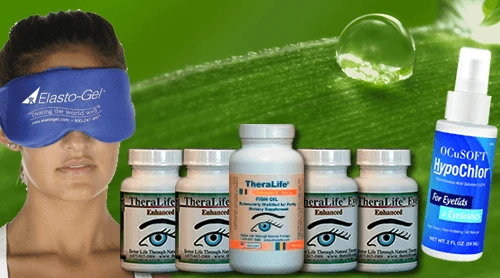TheraLife is a unique provider of oral eye treatment care, offering products specifically designed to address various eye conditions, including chalazions. A chalazion is a firm, painless lump in your eyelid caused by blockage and inflammation of a meibomian gland, leading to localized granulomatous swelling without infection. Unlike the tender, red lesions of a stye, chalazia present as slow-growing nodules deep in the lid. Factors such as chronic blepharitis, skin conditions, or poor eyelid hygiene can increase the risk of developing chalazia. While manageable at home, they sometimes require professional intervention.
TheraLife’s products are formulated to benefit individuals suffering from eye conditions by providing a comprehensive solution that includes oral treatment, which is not offered by any other company. This innovative approach ensures effective management and relief from symptoms associated with conditions like chalazions, blepharitis, and dry eyes. TheraLife empowers customers with the knowledge and tools to recognize, treat, and prevent these conditions, promoting overall eye health and well-being.
Oral Treatment for Chalazion Recovery
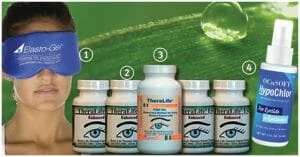
TheraLIfe Eye, warm compress – Chalazion Symptoms/ Blepharitis treatment winning combination that works.
Add To Cart
ey Takeaways
- A chalazion is a painless, localized swelling in the eyelid caused by blockage and inflammation of a meibomian gland.
- It appears as a firm, non-tender nodule, usually away from the eyelid margin, without pus or acute redness.
- Chalazia are not infections and are unrelated to poor hygiene, but result from blocked oil gland secretions.
- Common risk factors include chronic eyelid inflammation, conditions like blepharitis or rosacea, and previous chalazia.
- Treatment involves warm compresses, eyelid hygiene, and medical evaluation if it persists or causes discomfort.
Understanding Chalazion: Definition and Causes
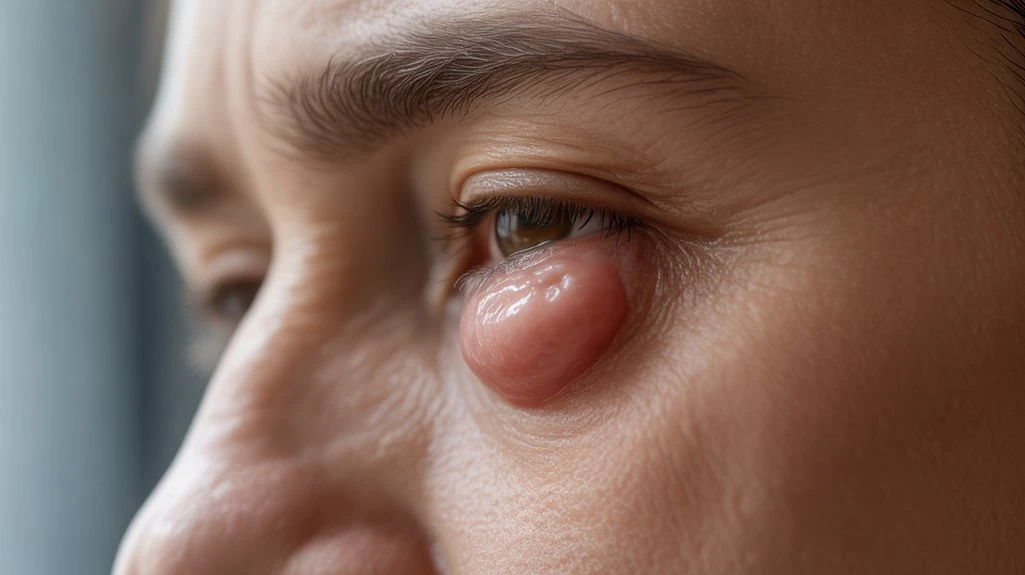
A chalazion represents a localized, painless swelling within the eyelid, typically resulting from obstruction and inflammation of a meibomian gland. You may confuse a chalazion with a stye, but unlike a stye, a chalazion isn’t infectious and rarely causes significant discomfort.
It’s essential to understand that chalazia develop when lipid secretions from the meibomian glands become blocked, leading to granulomatous inflammation. Demodex mites can also contribute to blocked meibomian glands, leading to various eyelid issues. Chalazion misconceptions often arise, particularly regarding causes—these aren’t the result of poor hygiene or direct infection.
Treatment myths also circulate; antibiotics are generally ineffective unless secondary infection occurs. Instead, warm compresses and gentle eyelid massage remain evidence-based first-line interventions.
Recognizing the actual pathophysiology allows you to differentiate chalazia from other eyelid lesions and approach management appropriately.
Common Symptoms to Watch For
When you develop a chalazion, you’ll often notice persistent eyelid swelling and a painless, localized nodule within the lid. This lesion may gradually enlarge, sometimes exerting pressure on the ocular surface and causing blurred or distorted vision. Recognizing these hallmark symptoms is essential for early identification and appropriate management. Warm compresses are recommended for symptom relief and to assist in drainage and healing of styes, which are sometimes mistaken for chalazions.
Persistent Eyelid Swelling
While most eyelid lumps resolve on their own, persistent eyelid swelling often signals a chalazion, especially if the swelling remains localized and painless for several weeks. You might notice gradual enlargement that doesn’t subside, accompanied by mild eyelid discomfort or persistent irritation.
Clinically, a chalazion develops from chronic inflammation and blockage of a meibomian gland, causing a localized granulomatous response. Unlike acute infections, this swelling rarely presents with significant redness or warmth.
Persistent eyelid swelling may affect your vision if the lump exerts pressure on the ocular surface. Monitoring these features helps differentiate a chalazion from other orbital or eyelid pathologies.
- Localized, non-tender swelling
- Prolonged duration (weeks)
- Mild eyelid discomfort
- Persistent irritation without acute pain
- Minimal redness or warmth
Since meibomian gland dysfunction (MGD) is a common issue, it is important to watch for blocked glands that can lead to chalazion formation, especially if symptoms persist or worsen.
Painless Lump Formation
Painless lump formation often characterizes a chalazion, distinguishing it from other eyelid lesions such as hordeolum or malignancy. When you notice a localized, non-tender, slow-growing nodule on your eyelid, it’s a hallmark sign of a chalazion. Unlike a hordeolum, which typically presents with acute pain and erythema due to infection, a chalazion develops due to chronic lipogranulomatous inflammation of the meibomian glands. You’ll observe that the affected area feels firm yet doesn’t elicit discomfort upon palpation. This painless lump may gradually increase in size, but remains mobile beneath the skin and isn’t fixed to deeper tissues. Monitoring eyelid health by identifying such features is essential for differentiating benign chalazia from other eyelid pathologies that may require more urgent intervention. Additionally, maintaining regular eyelid hygiene is crucial to minimize the recurrence of chalazia and to promote overall eye health.
Blurred or Distorted Vision
Although a chalazion typically presents as a painless eyelid lump, it rarely causes blurred or distorted vision. The lesion itself is confined to the eyelid and doesn’t directly affect your visual acuity.
However, if a chalazion enlarges substantially, it may exert pressure on the corneal surface. This mechanical effect can induce irregular astigmatism, resulting in transient blurred vision or distorted vision. Most cases don’t progress to this stage, and visual symptoms are uncommon.
If you experience any of the following, consider consulting an ophthalmologist:
- Persistent blurred vision or sudden changes in clarity
- Distorted vision, such as wavy or bent lines
- Increase in size or pain of the eyelid lump
- Redness, swelling, or discharge from the eye
- Involvement of both eyes or recurrence of chalazia
Prompt evaluation guarantees ideal eye health. It is important to consider that aging and hormonal changes can also contribute to ocular conditions, emphasizing the need for regular eye check-ups.
Chalazion vs. Stye: Key Differences
You’ll notice that chalazia and styes differ in clinical presentation, underlying etiology, and ideal management. A chalazion typically appears as a painless, firm nodule away from the eyelid margin, whereas a stye is usually tender, erythematous, and located at the lash line. Recognizing these distinctions is essential because their causes—meibomian gland obstruction versus acute bacterial infection—require tailored treatment strategies. It is important to note that blepharitis, which can be classified as anterior or posterior, often coexists with these conditions and influences their management.
Appearance and Location
One distinguishing factor between a chalazion and a stye is their typical appearance and anatomical location on the eyelid.
When you examine chalazion characteristics, you’ll notice it usually forms as a painless, firm, and slowly enlarging nodule within the tarsal plate of the eyelid.
Unlike a stye, which often presents as a tender, erythematous swelling at the eyelid margin, a chalazion is typically found further from the lash line and lacks acute inflammation.
Understanding eyelid anatomy helps you differentiate between these lesions.
- Chalazion: firm, non-tender nodule deep in the eyelid
- Stye: painful, red swelling at or near the lash line
- Chalazion: usually not associated with pus or drainage
- Stye: often shows a visible central point or abscess
- Chalazion: persists longer and grows gradually
Styes are bacterial infections affecting glands near eyelashes, presenting as red, swollen bumps resembling boils or pimples.
Causes and Triggers
Recognizing the distinct appearance and location of a chalazion sets the stage for understanding the underlying causes and triggers that differentiate it from a stye. A chalazion develops when the Meibomian gland becomes obstructed, leading to a sterile, granulomatous inflammation. In contrast, a stye (hordeolum) results from an acute bacterial infection, typically involving the Zeis or Meibomian glands. You may encounter chalazion misconceptions, such as assuming all eyelid lumps are infectious; however, chalazia aren’t primarily caused by bacteria. Risk factors include chronic blepharitis, seborrheic dermatitis, and previous chalazia. Hormonal fluctuations and poor eyelid hygiene can also contribute. Recognizing these distinctions is essential for effective chalazion management, as inappropriate antibiotic use may not resolve non-infectious lesions, reinforcing the importance of accurate diagnosis. Both blepharitis and styes share common risk factors such as allergies, dry eyes, and poor hygiene, which can complicate diagnosis and management.
Treatment Approaches Compared
Although both chalazia and styes present as eyelid lumps, their management diverges due to fundamental differences in pathophysiology. Chalazia result from chronic, sterile inflammation of meibomian glands, while styes arise from acute bacterial infection of eyelash follicles or glands.
For chalazia, treatment emphasizes conservative measures and escalation to surgical options if resolution fails. In contrast, styes often respond to antibiotics due to their infectious nature. You should also incorporate lifestyle adjustments to reduce recurrence risk.
- Apply warm compresses to both chalazia and styes to promote drainage.
- Use topical or oral antibiotics for styes, not typically for chalazia.
- Consider incision and curettage as a surgical option for persistent chalazia.
- Maintain eyelid hygiene as a preventive lifestyle adjustment.
- Avoid eye makeup and contact lenses during acute episodes.
Incorporating regular use of hypochlorous acid eyelid cleansers can help manage blepharitis, a condition that may exacerbate chalazia.
Risk Factors and Prevention Tips
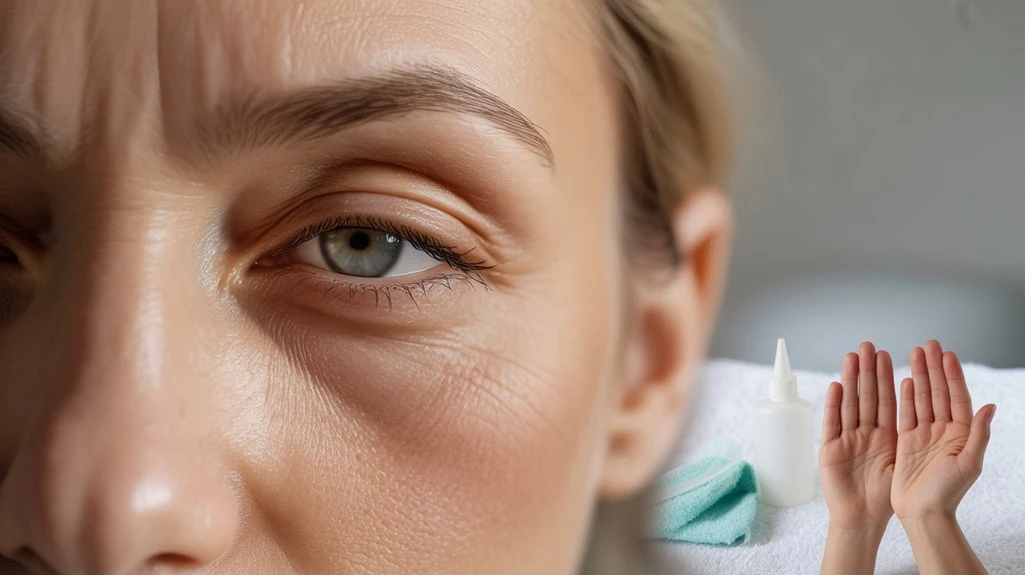
Because certain factors can increase your likelihood of developing a chalazion, it’s important to understand both the risks and strategies for prevention.
Individuals with chronic blepharitis, seborrheic dermatitis, or rosacea have a higher predisposition due to inflammation of the eyelid margins. Your lifestyle factors, such as frequent eye rubbing or improper makeup removal, can also elevate risk by introducing bacteria or blocking meibomian glands.
Adhering to ideal hygiene practices—like thorough handwashing before touching your eyes and regular eyelid cleansing—can considerably decrease chalazion incidence. If you wear contact lenses, maintain strict lens hygiene to reduce contamination.
Avoid sharing eye cosmetics and replace them regularly. By identifying modifiable risk factors and maintaining consistent hygiene practices, you can effectively diminish the chances of chalazion formation. Incorporating warm compresses into your routine can help manage symptoms, as they are effective for both blepharitis and styes, which are related conditions.
Home Remedies and Medical Treatments
While most chalazia resolve without intervention, effective management relies on a combination of home care and, when necessary, medical treatments.
You can incorporate natural treatments and lifestyle changes to facilitate healing and reduce recurrence. Evidence supports the following approaches to manage a chalazion:
- Apply warm compresses: Use a clean, moist cloth on the eyelid for 10–15 minutes, 3–5 times daily, to promote drainage.
- Maintain eyelid hygiene: Gently cleanse the eyelid margin with diluted baby shampoo or over-the-counter lid scrubs.
- Avoid eye makeup and contact lenses: Reduce irritation and bacterial contamination during the healing process.
- Perform gentle massage: Lightly massage the closed eyelid to help express the gland’s contents.
- Consider topical antibiotics: These may be prescribed if secondary infection is suspected, though not routinely recommended for uninfected chalazia.
Consistent care and adjustments in daily habits assist recovery.
When to See a Doctor
Occasionally, a chalazion may persist or worsen despite diligent home care, signaling the need for professional evaluation. You should know when to consult an ophthalmologist, especially if the lesion enlarges, becomes increasingly painful, or interferes with your vision.
Persistent swelling beyond several weeks, recurrent chalazia, or significant redness may indicate underlying pathology requiring advanced intervention. Urgent symptoms, such as sudden vision changes, intense pain, rapid swelling, or signs of infection like pus or fever, warrant prompt medical attention as they may suggest preseptal or orbital cellulitis, not a simple chalazion.
Additionally, if you have a compromised immune system or underlying eyelid abnormalities, seek earlier evaluation. Early consultation improves outcomes and helps exclude malignancy or other serious eyelid disorders that can mimic a chalazion.
Oral Treatment for Chalazion Recovery

TheraLIfe Eye, warm compress – Chalazion Symptoms/ Blepharitis treatment winning combination that works.
Add To Cart
Frequently Asked Questions
Can Chalazion Affect My Vision Long-Term?
If you’re concerned about vision impairment from a chalazion, evidence shows it rarely causes long term effects.
Typically, a chalazion may cause temporary blurring or distortion if it’s large enough to press on the cornea. However, with proper management, these symptoms resolve after the lesion subsides.
Chronic or recurrent chalazia can rarely induce astigmatism, but permanent vision impairment is uncommon.
Regular ophthalmologic evaluation guarantees ideal outcomes and prevents complications.
Is a Chalazion Contagious to Others?
You don’t need to worry about a chalazion being contagious; it’s not spread from person to person. The causes of chalazion involve blocked meibomian glands, not infectious agents like bacteria or viruses.
Since it’s not contagious, you won’t transmit it by sharing towels or close contact.
Preventing chalazion focuses on maintaining eyelid hygiene, using warm compresses, and managing underlying conditions like blepharitis or seborrheic dermatitis to minimize gland blockage.
Can Makeup or Contact Lenses Cause a Chalazion?
You increase your risk of developing a chalazion if you neglect proper makeup hygiene or contact lens care.
Makeup residue and expired cosmetics can block the Meibomian glands, while improper contact lens handling introduces bacteria and debris to the eyelid margin.
Evidence shows that thorough removal of eye makeup and strict adherence to contact lens cleaning protocols greatly reduce gland obstruction and inflammation, thereby lowering your likelihood of chalazion formation.
Will Insurance Cover Chalazion Removal Surgery?
When you consider chalazion removal surgery, it’s important to review your insurance policies closely.
Most insurance plans cover surgical costs if the procedure’s medically necessary, such as when conservative treatments fail or vision’s impaired. You’ll need clinical documentation showing persistent or recurrent chalazion, along with symptoms like pain or functional disruption.
Cosmetic removal, however, usually isn’t covered. Always contact your provider for pre-authorization and verify any out-of-pocket expenses before scheduling the procedure.
How Soon Can I Wear Eye Makeup After Chalazion Treatment?
Did you know that nearly 70% of patients experience full recovery within two weeks after chalazion treatment?
You should avoid eye makeup during your initial recovery time to reduce infection risk and irritation.
Most ophthalmologists recommend waiting at least 2 weeks post-procedure before resuming eye makeup, provided your eyelid has fully healed and there’s no redness or discharge.
Always consult your ophthalmologist for personalized guidance based on your clinical progress and healing response.
Oral Treatment for Chalazion Recovery

TheraLIfe Eye, warm compress – Chalazion Symptoms/ Blepharitis treatment winning combination that works.
Add To Cart
Conclusion
If you notice a persistent, painless eyelid lump, it could be a chalazion rather than a stye. While early intervention like warm compresses and eyelid hygiene is beneficial, you can also explore TheraLife’s range of products for eye care. TheraLife is unique in providing oral eye treatment, which has been beneficial for many customers dealing with various eye conditions. Their products aim to improve eye health naturally and are trusted by individuals seeking relief from recurring issues. By understanding the difference between chalazion and other eyelid conditions, and managing risk factors with TheraLife’s products, you can greatly reduce your likelihood of recurrence and enhance your overall eye wellness.

